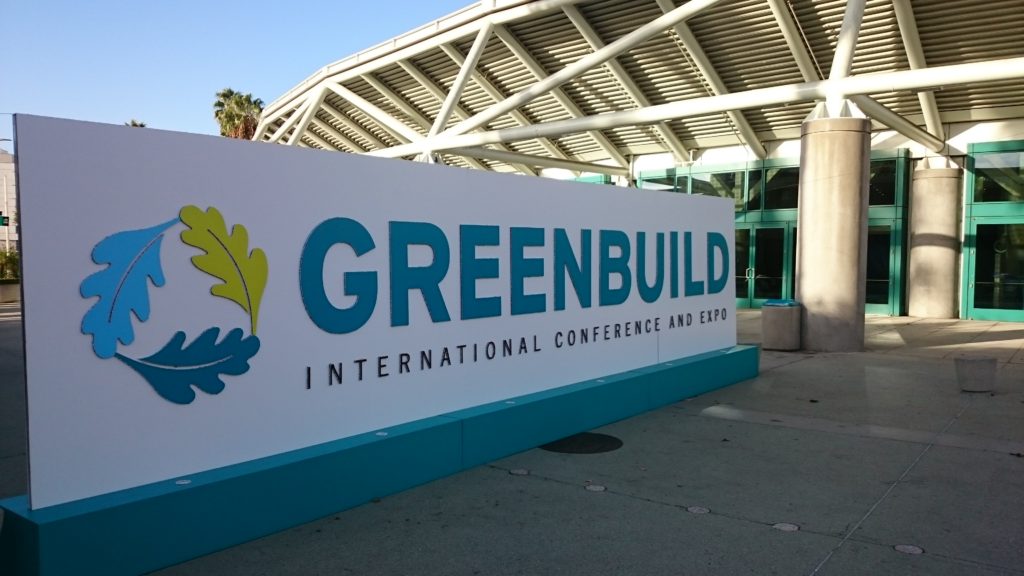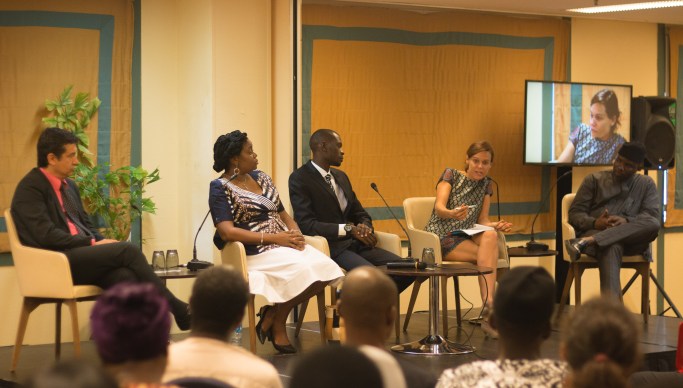Buildings are so important to our lives that we spend up to 90% of our time daily inside them. We go from our homes, to offices, to shopping malls, to fitness centres and the list goes on. Buildings shape our cities and our lives in many ways. They affect our health, productivity and even creative potentials. This is the extent to which they affect our lives. But how do they affect our environment?
Buildings, by sector, are the largest consumers of energy in the world. About 39% in proportion. More so, they are responsible for about one third of the global greenhouse gas emissions.
With the recent ratification of COP21 agreement by many countries in the world, including Nigeria , it is pertinent that efforts should be stepped up by stakeholders in the building and construction sector to reduce the carbon footprint of the industry.
From the 2nd to 7th October, industry professionals in the green building sector of the United States and around the world gathered in Los Angeles to participate in the annual Green Build Conference. On the invitation of the United States Green Building Council, I joined over 33,000 people in attending the August event. Architects, engineers, urban planners, quantity surveyors, other stakeholders in the sector, from the private, government, academia and nonprofit organizations were in attendance.

The 5-day event featured a number of education sessions surrounding green building. By theme, the sessions revolve around communities and affordable homes, energy efficiency and production of eco-friendly materials. A large exposition hall was dedicated to companies advertising their products and services, including universities running sustainability programmes.
With my background in Civil Engineering and active research in urban built environment, most of the sessions I attended were talking about energy efficiency of buildings.
Having made the claim earlier that buildings by sector, are the largest consumers of the total energy produced in the world, the biggest opportunity green buildings offer is that of reducing energy consumption and subsequent GHG emissions. Our heating, ventilating and air-conditioning equipment need to consume less energy while providing optimum thermal comfort.
For instance in Nigeria, the large chunk of power consumption goes in trying to cool our indoor spaces or keeping our food frozen in the refrigerator. The tropical climate of Nigeria makes it relatively warm round the year, especially for the northern part. Thus, for engineers to go green, they need to start bioclimatic designs of buildings. Designing and constructing buildings in cognizance of the local climate.
Generally, engineers should aim for maximum natural ventilation in order to reduce the need for mechanical cooling. Heat sinks like concrete should be avoided because it absorbs heat when the sun shines on it and during the night, when the environment is supposed to be cooler, it becomes hot because the concrete is now breathing out the heat it absorbed during the day.
These represent some of the strategies we need to be looking at for us to make our buildings more environment friendly while saving us a lot of money.
GreenBuild education sessions advocate for more user engagement in designing energy efficiency programmes. Because ultimately, the users will be responsible for the usage of the energy consuming appliances and their behaviors will affect this usage. Designers need to know the occupants, the occupants’ choices in terms of schedule, temperature, lighting etc. and also how the occupants think. While occupancy engagement might be challenging, whenever designers of public buildings like malls, offices, schools, hospitals, etc. have the opportunity to do that, they should as it will profit the environment more if they are engaged.
Integrative process and community engagement should be human-centered design, a speaker mentioned during one of the sessions. Every green building is a story about people. Therefore, green buildings should change the way we design buildings.

Going green might be worrisome when initial costs are considered. But because a green building is not only considered during the initial stage, a life cycle assessment of the building is required. Therefore, in the long run, all investments made on going green will pay off on the owner through energy savings and on the environment.
A dedicated session for contractors made bold statements on the challenges of going green. Money will always be a factor and the gains must be satisfied. Market incentives should be in place to galvanize clients and contractors in going green.
One of such market strategies is the US green building rating system, Leadership in Energy and Environment Development (LEED). Its objective is to certify how green or environment friendly a building is. Based on gauged environment strategies relating to site, energy use, water use, materials and indoor environment quality, buildings score points in order for them to be LEED certified. This certification process cuts across all building types, residential, commercial, schools, new building, existing building and even neighborhoods get certified. Most clients in the US nowadays request for LEED certified buildings, because of the benefits.
The vision is therefore broad. The number of participants was overwhelming and reassuring to understand how important the greening of the building sector is.
Professionals in the building sector in Nigeria must take a cue and start going greener in order to safeguard our lives and the environment.
For more articles related to green building and sustainable construction, please subscribe to our blog below.
[blog_subscription_form]
Written by Sadiq.
 Sadiq Abubakar Gulma steers the organizational mission of Green Habitat. He is a member of the Green Talents International Forum for High Potentials in Sustainable Development, a LEED accredited green building professional and has a master’s degree in Environmental Engineering. His research interest and work lie in investigating and improving the thermal conditions of urban built environments. Follow him on Twitter @TheCivineer
Sadiq Abubakar Gulma steers the organizational mission of Green Habitat. He is a member of the Green Talents International Forum for High Potentials in Sustainable Development, a LEED accredited green building professional and has a master’s degree in Environmental Engineering. His research interest and work lie in investigating and improving the thermal conditions of urban built environments. Follow him on Twitter @TheCivineer




I like the idea of LEED. What’s the prospect of bringing such technologies to South-east Asia? “Development” is a buzz word here, and everyone wants to build infrastructure. It’s as good an opportunity as any to enter these markets now.
Dear Saurab,
Thank you for your comment. LEED is truly in an innovative idea that has spurred other innovations like BREAM and Green Star. LEED is present in countries like India and the Philippines. The opportunities are limitless as protecting the environment is a watchword now.
Thank you.
Sadiq.